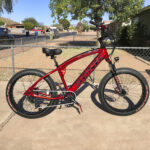For many women, the joy of cycling can be overshadowed by a persistent and uncomfortable problem: saddle pain. It’s a common issue, often accepted as part of the experience, but it absolutely shouldn’t be. Like many women in cycling, I used to think some level of discomfort was inevitable. My own history is filled with adventures on ill-fitting bikes – from a rickety Andean bicycle bought for a song to a mountain commute on a saddle that seemed determined to shred my cycling shorts. These experiences, while character-building, highlighted a critical truth: saddle pain is not something women cyclists have to simply endure.
It wasn’t until recently, after years of riding, that I finally discovered a saddle and setup that truly worked for me. The revelation was profound: “Ohhhhhhh … oh I seeeeee … ” This moment underscored a fundamental principle: when you’re cycling, your sensitive areas – your vulva, your perineum – should not be in pain.
While some initial soreness is normal, especially for new cyclists or on longer rides, persistent, sharp pain, numbness, or swelling is not. Cycling should be a source of enjoyment and empowerment, not a cause of ongoing discomfort. If you’re experiencing this kind of pain, know that it’s a problem you can solve by understanding saddle adjustment and choosing the right saddle.
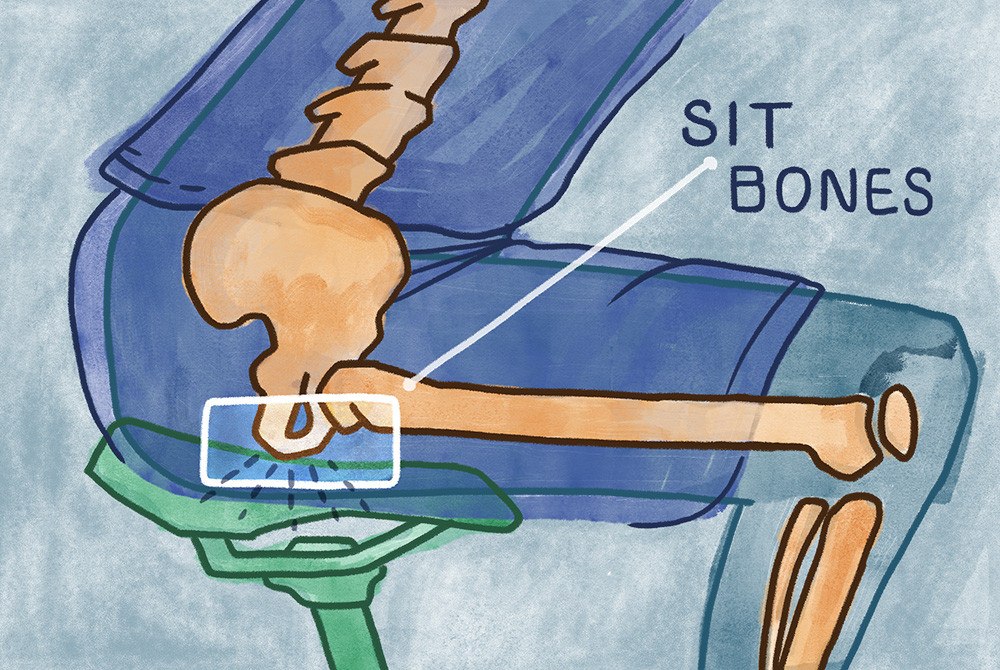 Illustration explaining sit bones in relation to a bicycle saddle.
Illustration explaining sit bones in relation to a bicycle saddle.
Understanding Why Cycling Can Cause Crotch Pain for Women
For women in cycling, pain in the crotch area is frequently caused by excessive pressure on the delicate tissues of the vulva. The key to comfortable cycling lies in proper weight distribution. When you are correctly positioned on a bike saddle, your weight should primarily rest on your sit bones – the bony prominences at the base of your pelvis. However, if too much weight is directed onto the vulva itself, encompassing the labia and surrounding tissues, it leads to pain, swelling, and even numbness.
Incorrect saddle adjustment is a primary culprit for this excessive pressure. Factors like saddle height, tilt, and fore/aft positioning play crucial roles. Furthermore, the overall bike fit and even the saddle selection itself can contribute to the problem. It’s vital to understand that there isn’t a universal “perfect” setup. Optimal adjustment is about tailoring the bike to your individual anatomy and riding style. Ultimately, it’s about how your body feels when you are riding.
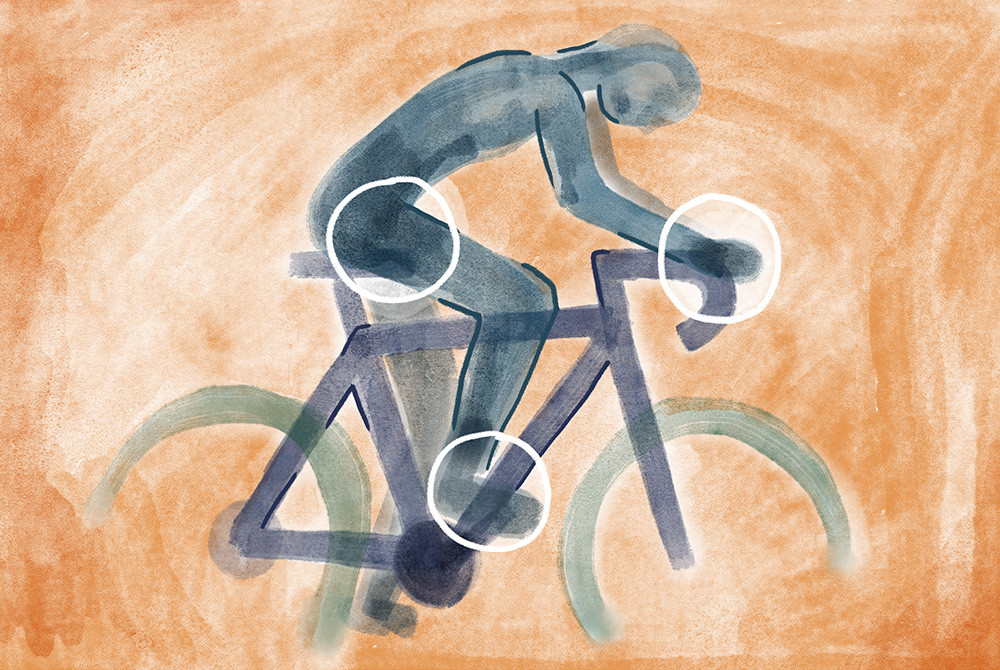 An illustration showing the three main contact points on a bicycle.
An illustration showing the three main contact points on a bicycle.
Saddle Adjustment: Height for Women Cyclists
Saddle height is fundamental to achieving balanced weight distribution across your three primary contact points on the bike: your feet, your hands, and your sit bones. If the saddle is positioned too low or too high, it can force weight away from your feet and hands, concentrating pressure directly onto your crotch.
Generally, the correct saddle height allows for a slight bend in your knee when your leg is at the point of full extension during pedaling. Adjusting saddle height should be done in small increments. The goal is to find that sweet spot where you feel balanced and comfortable across all three contact points while riding. This adjustment is crucial for women in cycling seeking to minimize saddle discomfort.
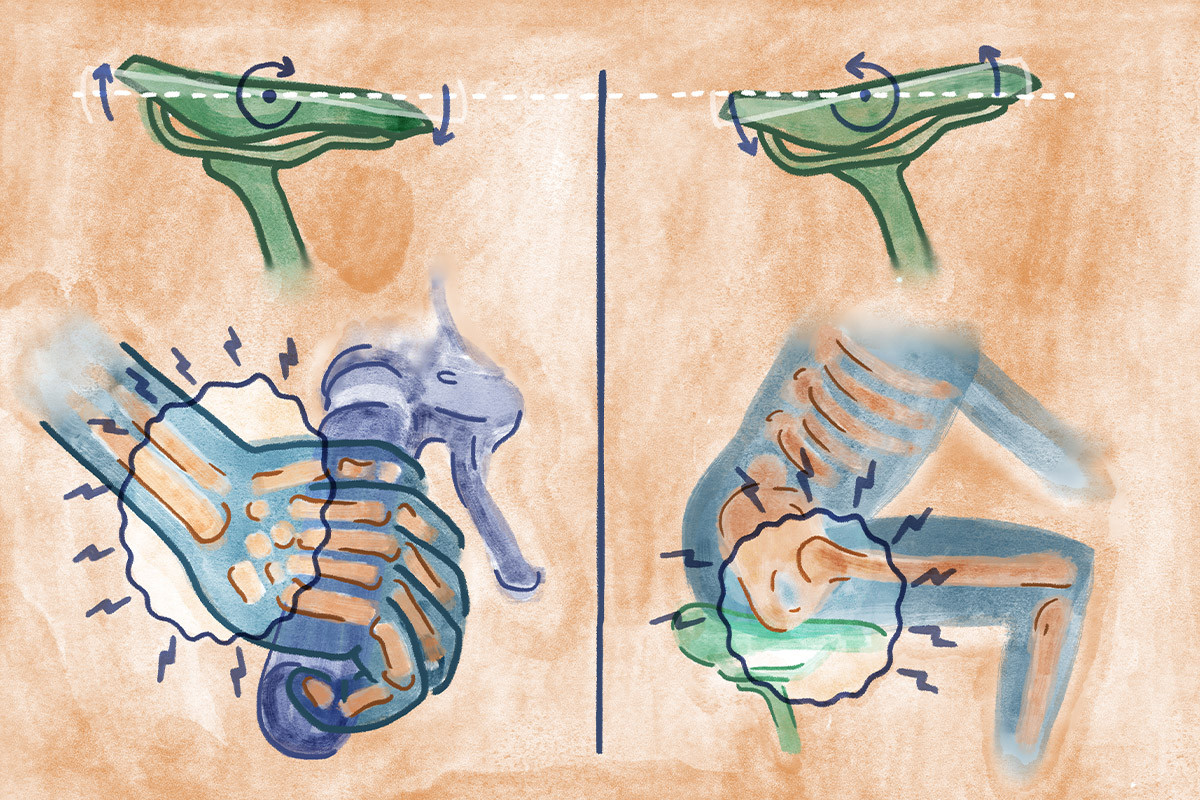 Illustrates the effect of tilting a bike saddle too far up or down.
Illustrates the effect of tilting a bike saddle too far up or down.
Saddle Adjustment: Tilt for Women’s Comfort
Saddle tilt is another critical adjustment for women’s cycling comfort. The ideal starting point is a neutral saddle position, where the nose of the saddle isn’t pointing significantly upwards or downwards.
If the saddle nose is tilted upwards, it can exert unwanted pressure on your soft tissues, leading to pain and numbness. Conversely, if the nose is tilted downwards, you might find yourself sliding forward onto the narrower part of the saddle, again increasing pressure on sensitive areas. A downward tilt can also shift excessive weight onto your hands, potentially causing wrist pain. Fine-tuning the saddle tilt is essential for women to achieve a comfortable and pain-free cycling experience.
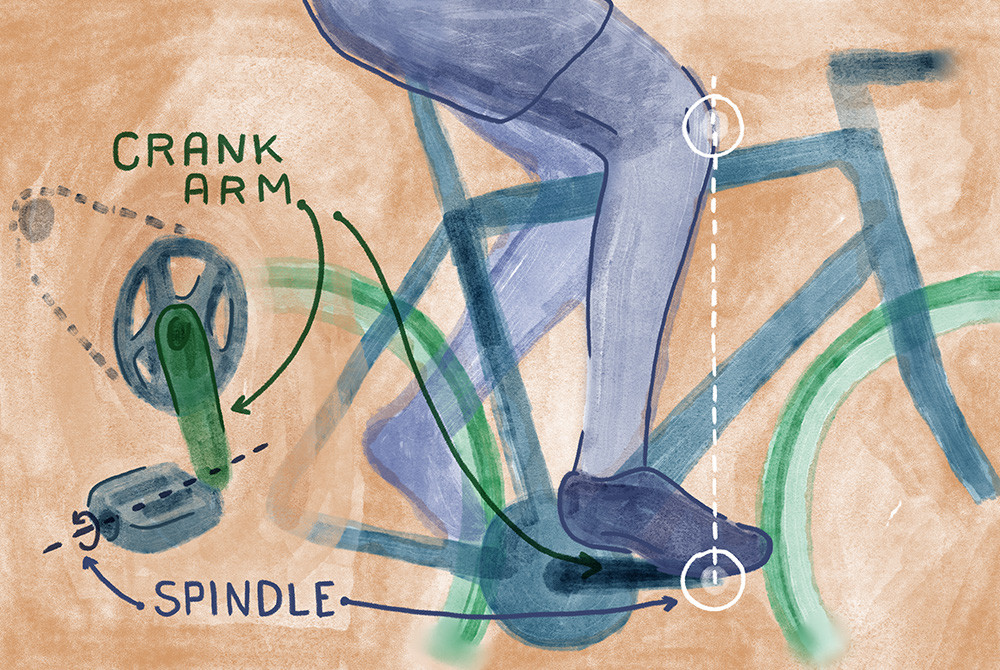 Illustrates a tip for setting the fore/aft position of your bicycle saddle.
Illustrates a tip for setting the fore/aft position of your bicycle saddle.
Saddle Adjustment: Fore/Aft for Efficient Cycling
The fore/aft position of your saddle, referring to how far forward or backward it is positioned on the seatpost, significantly impacts both comfort and pedaling efficiency, especially for women in cycling. A general guideline to start with is to check your kneecap alignment.
When your crank arm (the part connecting the pedal to the bike frame) is horizontal to the ground, your kneecap should ideally be positioned directly above the pedal spindle (the center of the pedal). While some cyclists use a plumb bob for precise measurement, the key takeaway for most beginners is understanding that fore/aft position is adjustable and directly affects saddle comfort and overall bike fit. If you’re unsure where to start, position the saddle in the middle of its adjustment range and make small adjustments from there until you find a comfortable and efficient pedaling position.
Bike Fit: A Holistic Approach for Women Cyclists
The human body is wonderfully complex, and so is the bicycle. Achieving optimal cycling comfort, particularly for women, requires considering the bike fit as a whole, not just individual saddle adjustments. Saddle adjustments are always relative to other bike components, and the entire bike setup should be tailored to your unique body proportions and riding style.
If you’ve meticulously adjusted your saddle height, tilt, and fore/aft position and are still experiencing discomfort, the root cause might lie in a broader bike fit issue. For instance, the bike frame itself could be the wrong size – either too large or too small. Handlebar height and reach can also contribute to saddle pressure. In such cases, seeking a professional bike fit assessment at a reputable bike shop or consulting a physical therapist specializing in cycling can be invaluable. They can analyze your riding posture and bike geometry to identify and address fit problems you might not be able to solve on your own.
Saddle Sores: What They Are and How to Prevent Them
Saddle Selection: Choosing the Right Saddle for Women
Ideally, after carefully troubleshooting saddle adjustments and bike fit, you should be able to hop back on your bike and exclaim, “Ohhhhhh … oh, I seeee! This feels great!” However, if cycling remains painful despite these adjustments, it might be time to consider investing in a different saddle, specifically one designed for women’s anatomy.
Historically, many bike saddles were designed with male anatomy in mind. However, women generally have wider sit bones than men. This anatomical difference often means women benefit from saddles that are slightly wider to provide better support and pressure distribution. Fortunately, the cycling industry has recognized this need, and there are now numerous saddles on the market specifically engineered for women’s bodies.
Choosing a saddle is a very personal process due to the wide variation in individual anatomy. A saddle that your friend raves about might not work for you at all. The best approach is to try out different saddles before making a purchase. Many bike shops offer saddle demo programs that allow you to test ride various models to see what feels best for your body.
Saddle Swap: Guide to a Good Fit
Getting Back in the Saddle: Stories of Women in Cycling
In researching this article, I connected with fellow adventure cycling enthusiasts to gather their experiences with saddle adjustment and pain. Interestingly, some reported never having significant issues, while others shared a spectrum of saddle-related dramas.
Kara de los Reyes, for example, recounted touring England on a worn-out secondhand saddle that would flip upwards whenever she shifted her weight – a truly unique saddle challenge!
Bikepacker Pepper Cook shared a story about replacing her well-worn Brooks saddle with a brand new one right before a major bike tour. The new saddle, not yet broken in, sat higher than her old one, completely throwing off her carefully dialed-in bike fit.
Hillary Goulet described a rather startling incident involving a bike that was too large for her, leading to a painful “clitoris smash” when she had to brake suddenly.
Despite the awkwardness and pain often associated with these experiences, these women approached their cycling challenges with humor and a proactive attitude. They were willing to experiment, make adjustments, and get back on their bikes. This resilient spirit is truly at the heart of cycling.
Remember, the endurance aspect of cycling should be about challenging yourself physically and mentally, not enduring unnecessary pain in your crotch. If cycling becomes consistently painful, it’s a problem that can be solved. It might be a simple fix or require more time and experimentation, but your body will thank you for taking the time to address it.
Nuts and Bolts: Troubleshooting Crotch Pain for Women While Riding
Here’s a quick guide to troubleshooting saddle pain and getting back to comfortable cycling:
1. Fine-tune Saddle Adjustments:
Carefully adjust your saddle height, tilt, and fore/aft position. Make small changes and test ride after each adjustment to assess the impact.
2. Evaluate Overall Bike Fit:
Consider whether your bike frame size and handlebar setup are appropriate for your body. If necessary, seek a professional bike fit.
3. Explore Different Saddle Options:
If adjustments and bike fit don’t resolve the issue, try different saddle models, particularly those designed for women. Take advantage of saddle demo programs if available.

